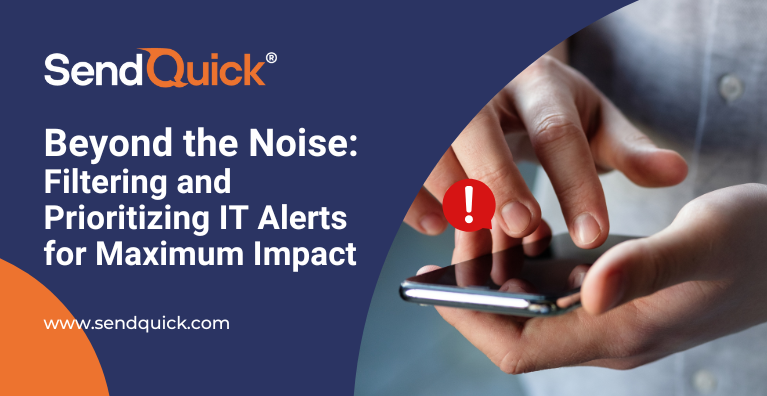From security events and system errors to performance anomalies, the sheer volume of notifications can overwhelm IT team. This leads to alert fatigue and reduced effectiveness in responding to critical incidents.
To optimize operational efficiency and maximize the impact of IT alerts, organizations need to implement intelligent filtering and prioritization mechanisms. Here, we will explore the importance of filtering and prioritizing IT alerts, and delve into strategies to ensure that the right alerts reach the right people at the right time.
The Challenge of Alert Overload
IT environments are complex, with multiple interconnected systems generating a constant stream of alerts. While these alerts provide valuable insights into the health and performance of IT infrastructure, managing them efficiently poses a significant challenge. Alert overload can result in information overload, making it difficult for IT teams to differentiate between critical incidents and trivial events, leading to delayed responses and increased risk exposure.
The Need for Filtering and Prioritization
Filtering and prioritizing IT alerts are essential steps to cut through the noise and focus on incidents that require immediate attention. By implementing intelligent processes, organizations can streamline their incident response and ensure that critical alerts are promptly addressed. Let us explore some key strategies to achieve effective filtering and prioritization:
Define Clear Alert Criteria: Start by establishing clear criteria that determine what constitutes a critical alert. Consider factors such as impact on business operations, potential security risks, and customer impact. By defining specific thresholds and parameters, organizations can filter out non-critical alerts and prioritize those that truly demand attention.
Implement Automated Alert Triage: Leverage automation and machine learning technologies to analyze incoming alerts and categorize them based on predefined rules. Implementing intelligent algorithms and historical data analysis can help identify patterns and prioritize alerts based on their severity and potential impact.
Collaborative Decision-Making: Foster collaboration between IT teams and subject matter experts to collectively assess and prioritize alerts. By involving stakeholders from different domains, organizations can gain a holistic perspective and make informed decisions on alert prioritization.
Adaptive Alerting: Implement adaptive alerting mechanisms that dynamically adjust alert thresholds based on contextual factors. For instance, during high-traffic periods or scheduled maintenance, alert thresholds can be temporarily adjusted to prevent unnecessary notifications.
Contextualize Alerts: Enhance the value of alerts by providing contextual information, such as affected systems, associated events, and potential root causes. By including this information, IT teams can quickly understand the scope and urgency of the alert, enabling them to prioritize their response effectively.
Continuous Refinement: Regularly review and refine alert filtering and prioritization processes based on feedback and evolving business needs. Monitor the effectiveness of the implemented strategies, gather insights from incident post-mortems, and adjust as necessary to ensure continuous improvement.
The Benefits of Effective Alert Filtering and Prioritization
Implementing robust alert filtering and prioritization mechanisms offers several benefits to organizations:
Improved Response Time: By focusing on critical alerts, IT teams can respond swiftly to incidents, reducing downtime and minimizing the impact on business operations.
Reduced Alert Fatigue: Filtering out non-critical alerts reduces alert fatigue among IT personnel, allowing them to concentrate their efforts on resolving significant issues.
Enhanced Efficiency: Prioritizing alerts enables efficient resource allocation, ensuring that the most skilled and appropriate team members are assigned to handle critical incidents.
Effective Resource Management: By filtering and prioritizing alerts, organizations can allocate their resources optimally, minimizing the strain on IT personnel and infrastructure.
Conclusion
Filtering and prioritizing IT alerts are crucial steps to cut through the noise and optimize incident response. By implementing intelligent processes and leveraging automation, organizations can ensure that critical alerts receive the attention they deserve. By streamlining the alert management process, organizations can improve response times, minimize alert fatigue, and enhance operational efficiency.






